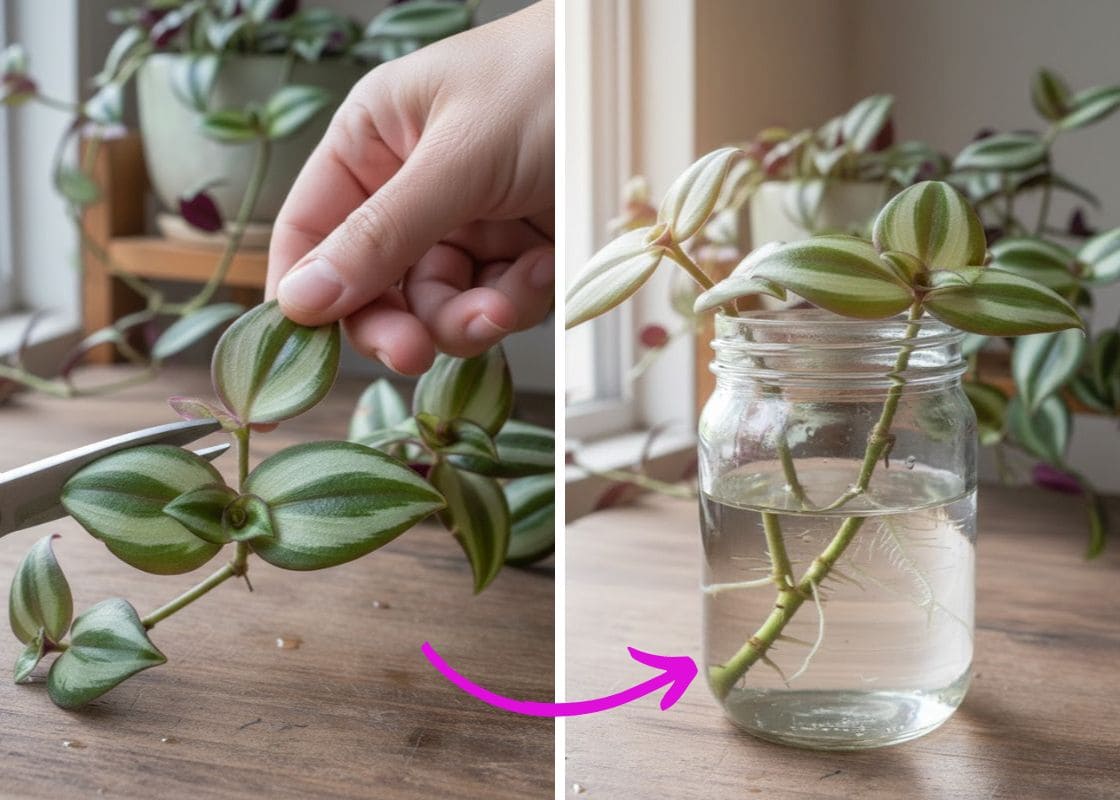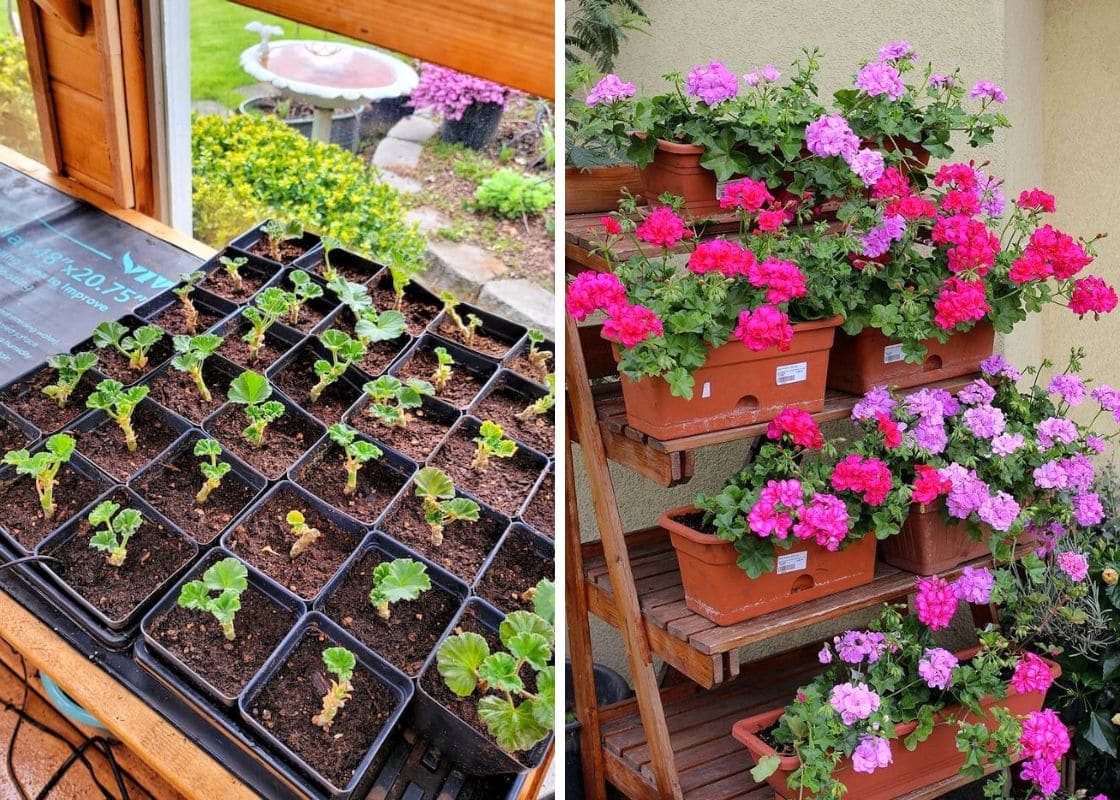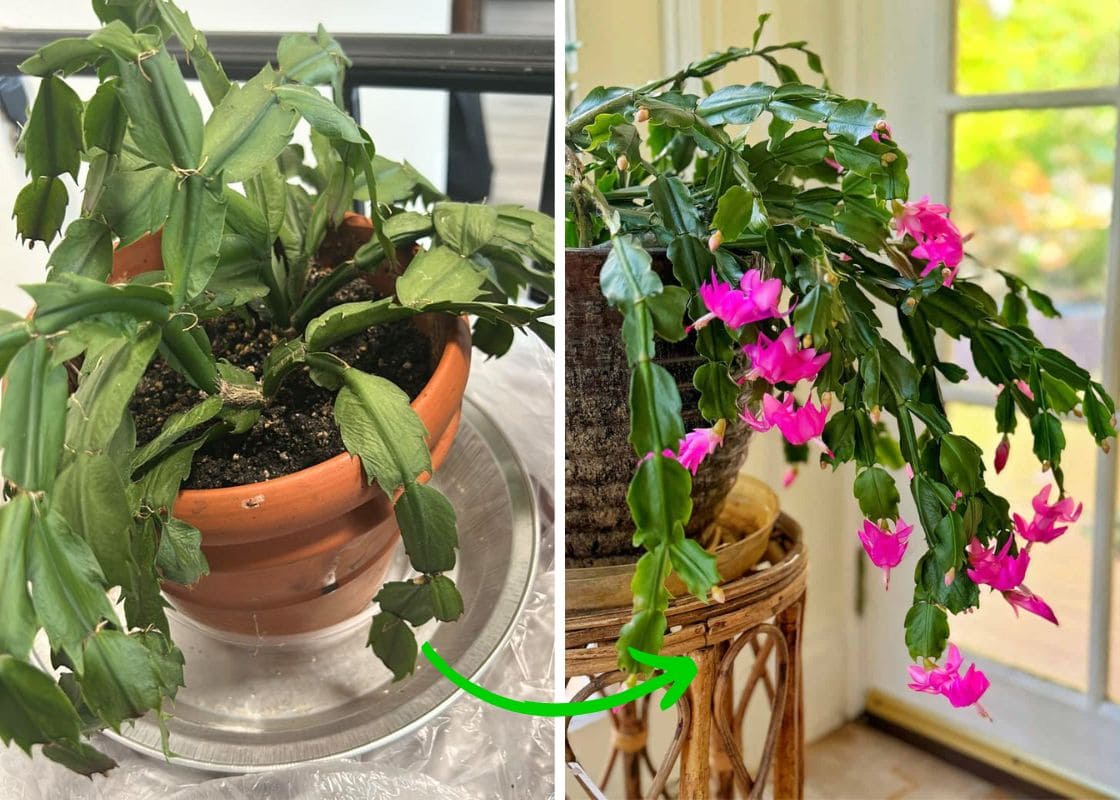Snake plants have earned their reputation as one of the easiest houseplants to love. With tall, sword-like leaves that can be solid green or boldly variegated, they add instant style to any corner of your home.
They don’t fuss about light, forgive a missed watering or two, and even seem to thrive on a little neglect. That’s why so many people think of them as indestructible.
But surviving and thriving are not the same. Snake plants can live for years without extra care, yet with the right nutrients, they grow sturdier, their colors deepen, and they bounce back from stress more easily.
The tricky part is finding balance. Give them too much fertilizer, and you’ll quickly see warning signs like yellow tips, brown patches, or floppy leaves.
To help you strike that balance, here are ten essential tips for fertilizing your snake plant the right way.
1. Use the Right Fertilizer
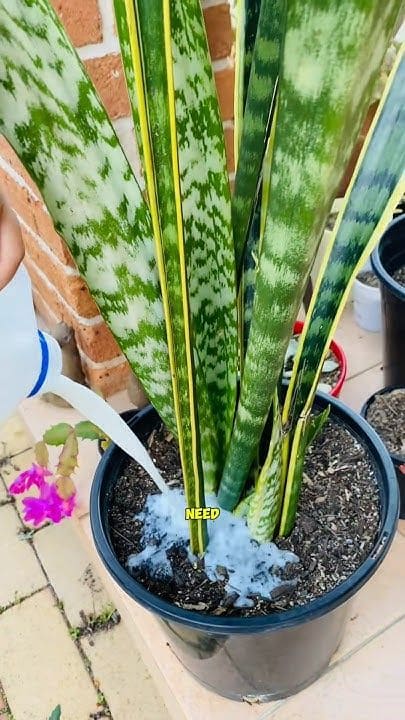
Snake plants aren’t heavy feeders, but they benefit from a balanced fertilizer. A liquid, water-soluble formula with an equal NPK ratio such as 10-10-10 or 20-20-20 works beautifully.
If you want slower, steadier feeding, a succulent or cactus-specific fertilizer also works since it has slightly less nitrogen, which helps prevent soft, floppy leaves.
Avoid fertilizers high in nitrogen alone, while they’ll push leaf growth, the leaves often become weak and prone to falling over.
2. Dilute More Than You Think
Snake plants are much more sensitive to fertilizer than fast-growing plants like pothos or monstera. The safest rule is to dilute your fertilizer to half strength, sometimes even one-quarter strength if you’re unsure.
Think of it like seasoning food: too much salt ruins a dish, but a pinch brings out the best flavor. Fertilizer is the same.
Strong solutions can burn the roots and leave mineral buildup in the soil. A gentle feeding is all your plant needs to absorb nutrients without stress.
3. Feed Only in the Growing Season
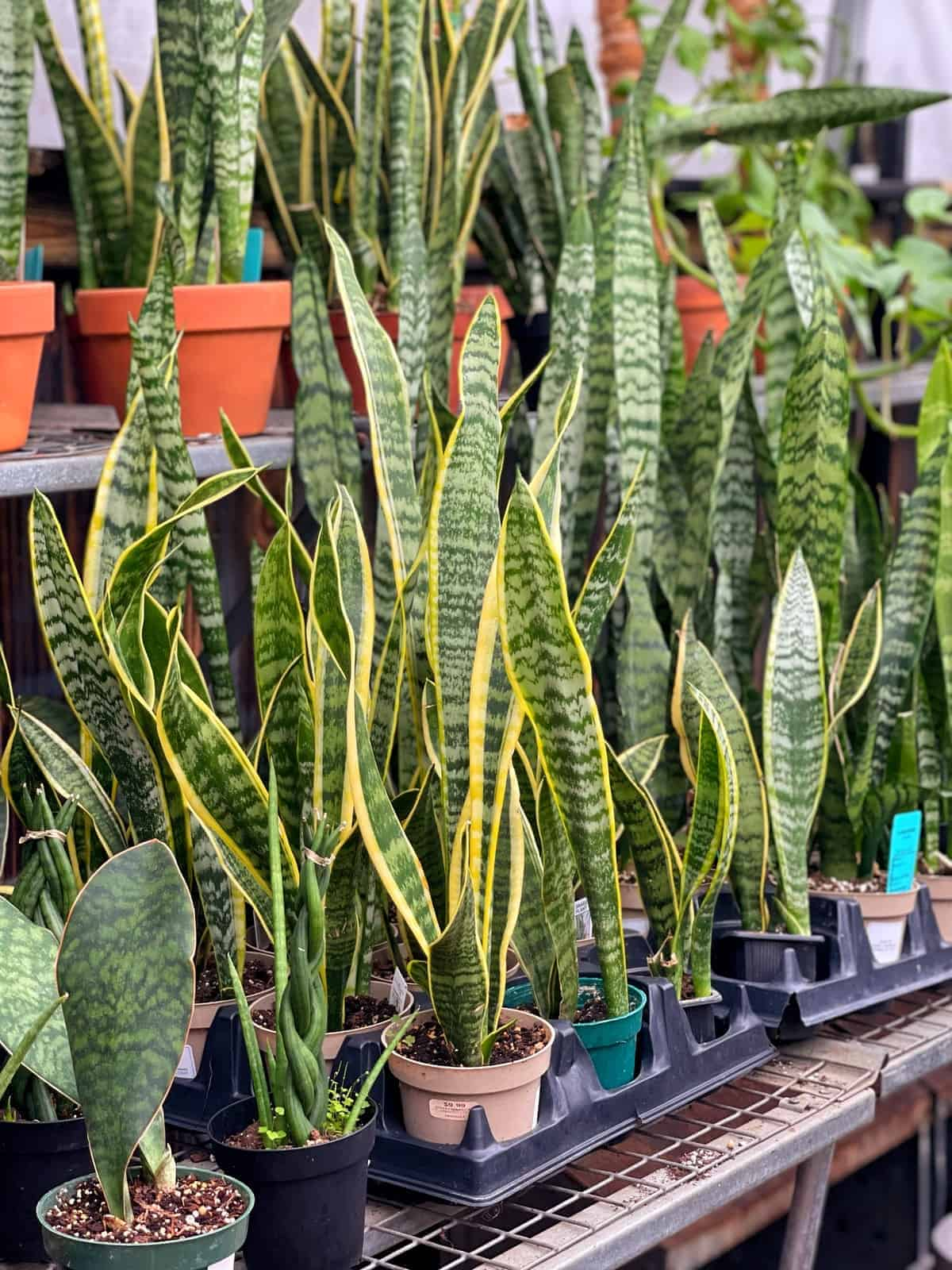
Like most houseplants, snake plants follow natural growth cycles.
In spring and summer, they actively produce new leaves, making it the ideal time to fertilize. A dose every 4-6 weeks gives them a boost without overwhelming their slow metabolism.
In fall and winter, growth slows dramatically. Feeding during this time usually backfires as the nutrients sit unused in the soil, creating salt buildup that damages the roots.
If you’re unsure, wait until you actually see new growth before adding fertilizer.
4. Don’t Forget the Soil
Snake plants need a well-draining mix to thrive. A standard potting soil is too heavy and holds water, which traps fertilizer salts around the roots.
Instead, use a cactus or succulent mix, or make your own by combining potting soil with sand or perlite. This allows excess water and nutrients to wash through easily.
Every year or two, refresh the soil or repot your snake plant as fresh mix resets the nutrient balance and reduces the risk of salt buildup.
5. Learn the Warning Signs
If you notice brown, crispy leaf tips, it may be suffering from fertilizer burn. Yellowing leaves can mean either too much food or poor drainage.
Also, a white crust forming on the soil surface is a sure sign of excess fertilizer salts.
On the flip side, if the leaves are pale or sluggish with growth, it might need a little more food. Paying attention to these signals helps you adjust your feeding schedule before real damage sets in.
6. Consider Organic Options
For a gentler approach, many gardeners swear by organic fertilizers. Worm castings can be mixed into the top layer of soil for a slow, steady release of nutrients.
Compost tea offers a liquid boost that’s mild and less likely to burn roots. Fish emulsion also provides a natural source of nutrients, though the smell may put some people off.
Organic options are ideal if you’re cautious about overfertilizing or want to keep your plant care routine as natural as possible.
7. Water Before You Feed
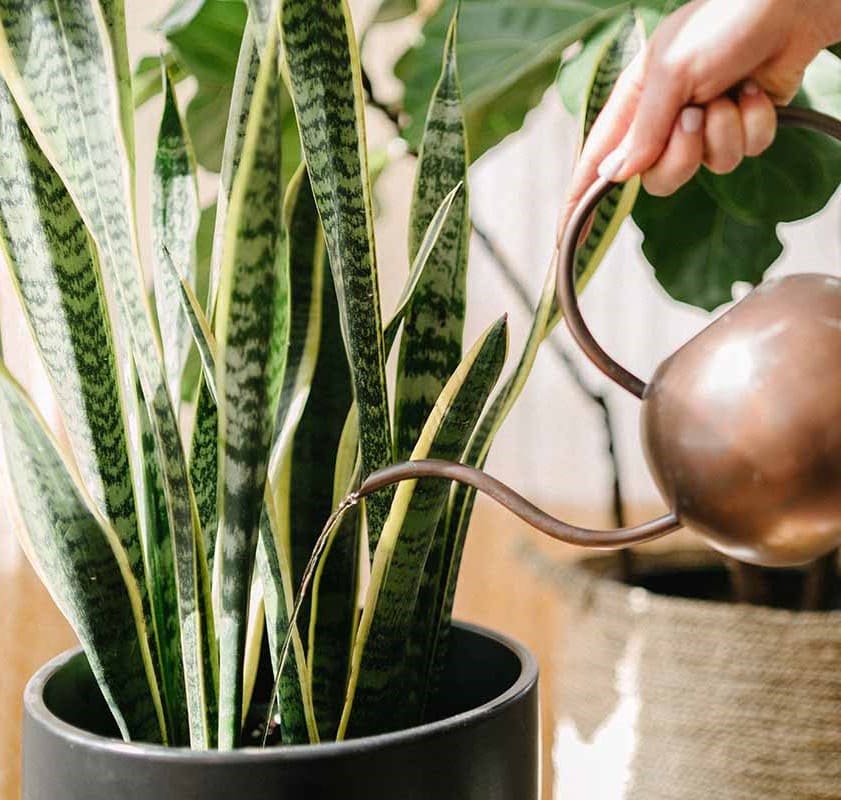
One of the easiest mistakes is pouring fertilizer into dry soil. Doing so sends concentrated nutrients straight to the roots, where they can burn and cause lasting damage.
To avoid this, water lightly first. This moistens the soil and cushions the roots. Then, add your diluted fertilizer solution.
The nutrients will distribute evenly instead of hitting dry roots with full force. As a result, the process is gentler and more effective.
8. Adjust for Varieties
Variegated types, with their yellow or white stripes, are especially sensitive. These varieties produce less chlorophyll than solid green plants, so they grow slower and don’t need as much food.
Feeding them with the same strength as an all-green plant can cause leaf burn or fading colors.
If you own a variegated snake plant, keep the fertilizer even more diluted, this preserves their unique patterns while keeping them healthy.
9. Match Fertilizing to Light Levels
How much light your snake plant receives directly affects how much food it can use.
A plant in bright, indirect light will actively grow and respond well to fertilizer. But a plant tucked into a dim hallway or shady corner uses nutrients much more slowly.
Feeding a low-light snake plant too often only leads to buildup in the soil. In those cases, cut back to just one or two light feedings during spring and summer.
Read more: Never Place Your Snake Plants in These 5 Spots if You Don’t Want to Kill Them
10. Pair Feeding with Leaf Care
Fertilizer isn’t the only way to improve your plant’s health. Each time you feed, make it a habit to wipe down the leaves with a damp cloth.
Snake plant leaves attract dust, and dusty leaves can’t photosynthesize as effectively.
By cleaning them, you’re helping the plant use light more efficiently, so every drop of fertilizer count. Plus, clean leaves look glossy and vibrant, adding to the plant’s beauty indoors.
See also: Here’s the Best Way to Grow a Snake Plant in a Spiral or Circular Shape


